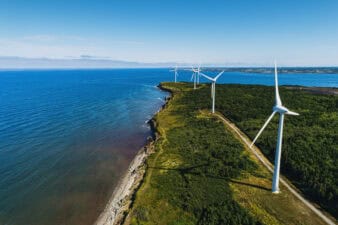This week, the environment minister for Alberta announced that the province will offer subsidies and tax breaks to renewable power projects worth over $13 billion, attempting to reach 30% renewable power generation by 2030. The program’s funding stems from a new carbon tax, which is expected to bring in $3 billion in revenues annually.
If the goal is met, it will result in 5,000 megawatts of new clean energy projects like wind, solar, and hydro.
The winding down of legacy coal plants will provide room for the new renewable power sources. In 2015 roughly 40% of the province’s generation came from coal. Wind power, in comparison, accounts for just 1,500 megawatts–about 5% of the total.
The government hasn’t decided how new projects will be selected, but billions are at stake.
Which companies will benefit?
A high-stakes selection process
“I think the clear commitment to the 30% renewables is going to send a clear signal to investors and provide the kind of certainty you need to see these billions of dollars of investment coming into the province,” said Sara Hastings-Simons of the Pembina Institute.
She expects plenty of interest (and competition) for the upcoming project contracts.
As of September 1, the Alberta Electric System Operator, a not-for-profit entity responsible for the planning and operation of Alberta’s grid, has already received 21 proposed solar projects totaling 681 megawatts and for 28 wind power projects totaling 4,646 megawatts.
The wind proposals alone are over three times larger than the current generation output. The solar projects are a whopping 60 times the existing provincial solar capacity.
Who will win?
Larger operators clearly have an advantage given their existing governmental relationships and economies of scale. Canadian Solar Inc. (NASDAQ:CSIQ) has a great chance of succeeding.
Over the years, Canadian Solar has consistently built up an impressive asset base. Last year, revenues topped $3.5 billion, resulting in a $172 million profit. This year, it’s on track to ship 5.4 GW of solar capacity–up from 4.7 GW in 2015.

Alberta won’t be its only growth driver. The company is in an attractive position to capitalize on global solar proliferation.
From 2000 to 2010, the world only installed a cumulative 120 GW of solar PV. In 2014 alone, solar PV installations reached 184 GW, comprising 0.5% of total global electricity generation. By 2030, it’s expected to hit 1,835 GW–over 10% of total global electricity generation.
Having access to economies of scale and existing relationships with financing partners is a huge advantage in a market driven by price.
In 2011, Canadian Solar could only install solar projects at a cost of $1.32 per watt. Last year, it used its growing scale along with falling industry costs to install projects at an average of just $0.41 a watt. Last quarter, it lowered that to just $0.39 a watt.
While nearly all industry players will experience falling costs, the biggest competitors will likely benefit the most. Canadian Solar is primed to become one of the larger players. For example, by the end of next year, the company anticipates hitting a cost of $0.29 a watt.
Expect Canadian Solar to be a major bidder for Alberta’s impending projects.








